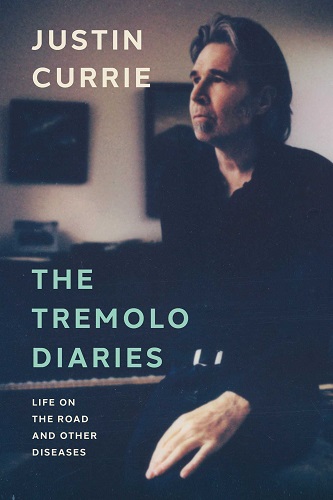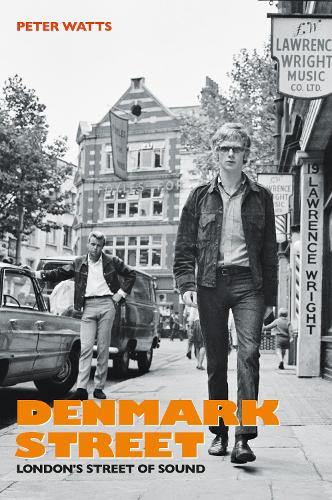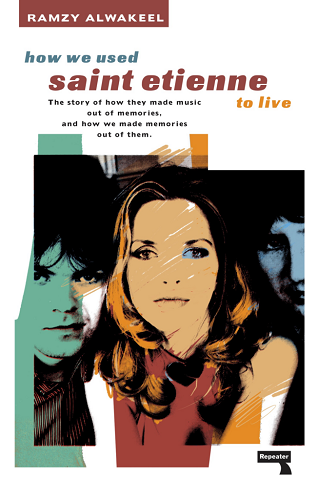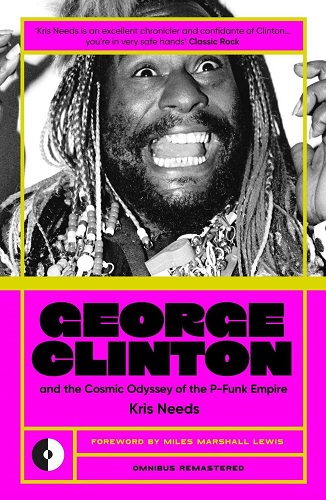In their bright frocks, chunky monkey boots and boyish haircuts, the vivacious postpunk hopefuls Dolly Mixture were hard to miss around town in late-70s Cambridge. I’d occasionally bump into their bassist and frontwoman Debsey Wykes, who lived a couple of doors down from my girlfriend, at gigs and house-parties. Now, almost 50 years on, Debsey is ready to tell her story. Teenage Daydream: We are the Girls Who Play in a Band (New Modern, 2025) is a brilliant, honest, at times hilarious read. Drawing in part on her well-kept teenage diaries and fan letters, Debsey charts her own musical youth from those first fist-fumbled power chords (as she puts it) in the spring of 1978, to the Dolly Mixture’s eventual split in the early 80s. Along the way she recalls best mates, bookings at London clubs (they were even supported by an embryonic U2 for a couple of gigs), backing Captain Sensible on Top of the Pops, and how the Dollys were briefly championed by the Modfather himself, Paul Weller, eventually signing to his Respond label. Success seemed only a beat away. Ultimately though, Cambridge’s finest girl group had to settle for airplay on the John Peel show and a devoted cult audience. But in a way that’s the story. Not every band makes it big. Back then there were few all-female bands but namechecked here are the Mo-dettes, who I remember were also terrific live, and the Gymslips, who supported the Dollys on tour. It’s worth noting though that the pioneering Dolly Mixture predated them both. Debsey was in it for all the right reasons and her infectious lo-fi pop still jangles down through the years. Scooting through the bittersweet Teenage Daydream brings it all back for me. If you have any interest in indie and punk from the 70s and 80s, read this book. Rob Webb (Sep 2025)
With “George Clinton and the Cosmic Odyssey of the P-Funk Empire” (Omnibus Press, 2024 edition), author Kris Needs plots Clinton’s journey from 1950s doo-wop into funk pioneer right through to his influence on the early hip-hop scene. This is less a Clinton biography and far more a deep dive into the funk family tree as the rolling cast of members in his empire are all introduced and followed as they branch off into their own various side projects. Needs is a Clinton superfan whose enthusiasm for his subject shines through and ensures that even the most obscure work from the P-Funk alumni is given due attention. As he states in his introduction “It’s hard to imagine what life would have been without P-Funk or how music might have ended up today.” This is the great strength of the book as it almost demands the creation of an ever-growing list of records to discover. Adding to the track-by-track analysis of much of Clinton’s discography are first hand accounts taken from interviews with the man himself as well as collaborators and friends. They paint a picture of a chaotic, drug fuelled whirl of creativity all pulled together by the vision and pioneering spirit of Clinton. So fascinating a character is Clinton that one book would struggle to do him total justice and I’m sure there is space for another book to delve into his remarkable, one-of-a-kind personality, but as a record of his work and influence Needs ticks all the boxes. John Laking (Sep 2025)

Justin Currie’s Parkinson’s diagnosis came as a massive shock to me. I no longer have to imagine how big a shock it was to Justin as he has written this book, “The Tremolo Diaries: Life On The Road And Other Diseases” (New Modern, 2025). We are introduced early to The Ghastly Affliction and learn of the diagnosis. Also, to Gavin, a shaky right hand who along with Justin is the main character in this unlikely buddy story. His appearances are unwelcome, unannounced and unrelenting. Part one as Del Amitri trek across the US as support to Barenaked Ladies from enormodome to enormodome is essentially a tour guide. Part two takes us to Europe as support to Simple Minds. Through more recognisable towns and cities Justin still manages to draw a smile or a tear, a guffaw or a pang of pain and frustration. I haven’t travelled much, hardly at all. I now want to start. As a travel guide the book gets 5 stars. We learn that touring with a band is mind-numbingly dull, repetitive and bleak except for the time spent on stage. Unless of course you’re fighting an errant and unpredictable right hand. So, as well as regaling us with tales of locals, mega stores, museums (lots of museums), art galleries (lots of art galleries), eateries (lots of eateries) and the gigs, we learn of the impact of Parkinson’s disease on a person who happens to be a successful (yes you are Justin, despite your protestations) professional musician. Justin Currie has always written about the shit side of life, love and loss with brutal honesty in his songs. This book, this diary, this opus, this confessional, this therapy session, whatever it is, takes it to another level. Writing this honest, and this exposing, doesn’t come along often. Dave Ross (Aug 2025 – for a longer appraisal of The Tremolo Diaries visit Dave’s website.)

Peter Watts’ Denmark Street (Paradise Road, 2023) tells the story of one of Britain’s most iconic musical thoroughfares. Known as Tin Pan Alley, Denmark Street was once a hive of music publishers, demo studios, and publicists. The Sex Pistols lived there, the Rolling Stones recorded there, and David Bowie camped out in the back of a converted ambulance. Melody Maker was founded on the street, the NME launched Britain’s first music chart there, and in an office at the end of the road, The Beatles signed the contract that ultimately lost them their songs. Watts captures these and many other stories in a richly layered history told with flair and precision. Blending archival research, personal anecdotes, and interviews with musicians, producers, and industry insiders, the book charts how this small Soho street became the engine room of British pop. Watts traces its evolution from a hub of sheet music sales in the early 20th century to its creative heyday in the 1960s and 70s. What sets this book apart – and is a real highlight – is Watts’ sensitivity to the street’s changing fortunes, particularly in the face of gentrification and redevelopment. His writing is affectionate but never sentimental, handling the cultural significance of Denmark Street with journalistic rigour and a touch of melancholy. A wonderful read for anyone curious about the history behind the sounds that shaped a nation. Mike Press (Aug 2025)

A celebration of “three people who really love pop music”, Ramzy Alwakeel’s “How We Used Saint Etienne To Live” (Repeater Books, 2022) pays effusive tribute to Bob Stanley, Pete Wiggs and Sarah Cracknell – those advocates of “persistent melody, evocative storytelling, dry humour and laser-precise arrangements”. Long-time fan Alwakeel opens with a charming origin story – he reveals that he first discovered Saint Etienne during Britpop’s zenith via the inclusion of their luminescent infidelity banger He’s On The Phone on Now That’s What I Call Music! 33. This feels entirely appropriate, given SE founder member and pop obsessive Bob Stanley has pinpointed receiving Benny Hill’s “Ernie (The Fastest Milkman in the West)” as a Christmas gift in 1971 as an entry point for his own subsequent Damascene conversion. Placing these Home Counties pop sages in the lineage of pre-WW2 American song-gatherer Alan Lomax and hip-hop’s cut n’ mixers via their trademark synthesis of 60s aesthetic and modernist sensibility, Alwakeel contemplates the enduring appeal of Saint Etienne’s three and a half decades’ worth of negotiating memory and a sense of place via a singular approach to disinterring archive sound, neatly described here as an unswerving ability to “use the past in a way that could only be contemporary”. With Saint Etienne’s forthcoming LP being described as “their final album-length statement”, we end with a lengthy inventory of the author’s most cherished St Et acquisitions: an apt conclusion for a book dedicated to a group who, in Stanley’s own words, were “born out of a love of records”. Matt Tomiak (Jul 2025)
I love books that place music in the context of social history – and if they include maps, that’s an added bonus. Aniefiok Ekpoudom’s Where We Come From: Rap, Home And Hope In Modern Britain (Faber & Faber, 2023) provides both. This compelling social history explores the evolution of UK rap and grime, offering a vivid account of the vibrant scenes in South London, Birmingham, and South Wales. Ekpoudom highlights the diverse communities that have shaped the music in these regions. Rather than focusing on mainstream figures, the book shines a light on lesser-known artists such as Cadet, Astroid Boys, and Despa Robinson. Through their stories, Ekpoudom illustrates how rap and grime have given voice to marginalised communities, reflecting their struggles, resilience, and aspirations. His writing is both lyrical and empathetic, skilfully weaving personal narratives with broader socio-cultural analysis. He traces the roots of these genres back to the post-Windrush era, linking them to the everyday experiences of Black and working-class Britons. This is a readable and illuminating book that ties music to a strong sense of place. It is as much about the history of these locations and their communities as it is about the music they produce. A vital contribution to understanding the people’s music of modern Britain. Mike Press (Jul 2025)
I first met Jakko in the late 1970s when he fronted a band with the enigmatic name 64 Spoons. Who’s The Boy With The Lovely Hair? The Unlikely Memoir Of Jakko M. Jakszyk (Kingmaker Publishing, 2024) tells the story of his childhood, his quest for his birth parents, his musical journey and how he met and worked with his musical heroes – up to and including (spoiler alert) Robert Fripp and joining King Crimson as vocalist and second guitarist. I have to declare an interest. I have Jakko’s solo albums, the 64 Spoons album, and the King Crimson triple CD collection Live in Vienna on which he sings. The narrative takes some unexpected twists and opens with a conversation with his American stepbrother, which I read twice with incredulity before moving into the book itself. Having said all that, there is some social commentary about growing up in the Watford area in the 1960s and having adoptive parents neither of whom had English as their first language. His father was Polish and his mother French. The revelation close to the end of the book reveals the source of its title and I won’t spoil that for you. The book was published in late 2024 and I read it over four days between Christmas and New Year. Jakko is a fine storyteller, he makes you smile, he makes you laugh out loud, he makes your eyebrows raise in surprise and in passages, brings a lump to your throat. There is an impending CD to accompany the book called Son Of Glen with music that I believe that Jakko was inspired to write while researching and writing the book. Ian Ashleigh (Jun 2025)
Heartbreak Is The National Anthem: How Taylor Swift Reinvented Pop Music by Rob Sheffield (Harper Collins, 2024) in which the long-time Rolling Stone staffer provides a droll, spirited fan’s eye view of Taylor’s dizzying rise to global supremacy. And what a ride it is. In Heartbreak Is The National Anthem we follow her career from preternaturally assured adolescent, personally delivering home demos to the country music bigwigs along Nashville’s renowned Music Row, via feuds, mass fandom and eventually the gargantuan success – or “Taypocalypse” – of the world-conquering Eras Tour. Memorably encapsulating her appeal to legions of young admirers (think, Sheffield tells us, “The Beatles times Motown times Bruce Springsteen times Britney times strawberry ice cream …”), he deploys an Anglophile 80s pop prism – there are namechecks for Morrissey, Paul Morley and the first Depeche Mode LP – to frame Swift’s work, reminding us of the mind-blowingly high standards that she’s maintained throughout an Imperial Phase that’s now, remarkably, approaching a full two decades. Matt Tomiak (May 2025)





